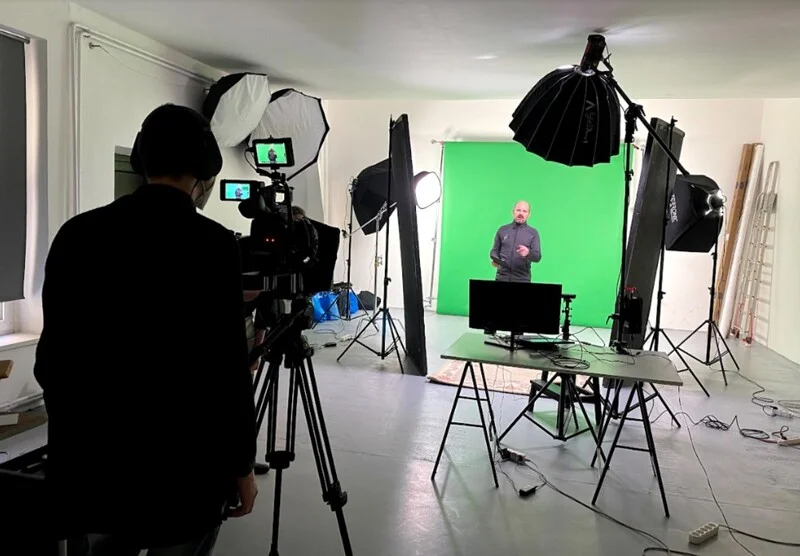Video Marketing: How to Drive Engagement and Sales Through Aesthetic Web Content
Video Marketing: How to Drive Engagement and Sales Through Aesthetic Web Content
Blog Article
Diving Deep Into the Nuances: Commercial Video Vs Corporate Video Clip - What Sets Them Apart?
In the world of visual narration, the differentiation in between industrial video clip and corporate video is often refined yet vital. From the distinctive target market and function each serves to the nuanced style and tone adopted, there are vital components that define commercial video clip from company video.
Target Market and Function
In the world of video production, identifying between corporate and business video clips is crucial as each serves a distinct target market and function. Commercial video clips are crafted primarily for promotional and advertising objectives. They aim to mesmerize customers, evoke feelings, and inevitably drive sales or brand acknowledgment. These videos are often short, interesting, and creatively developed to leave a long-term influence on the target market.
On the other hand, business video clips are tailored for internal or B2B communication within a firm. They serve educational, training, or communication functions instead than direct marketing. Company video clips aim to inform, educate, or align employees with the company's techniques, goals, and worths (corporate commercial video). These videos usually have a much more significant tone, focusing on delivering vital information clearly and efficiently.
Comprehending the unique target market and function of each type of video clip is critical for organizations aiming to leverage the power of video clip production properly. By straightening the material, style, and messaging with the intended audience and purpose, firms can optimize the effect and performance of their video clip advertising approaches.
Style and Tone
Crafting the design and tone of a video clip is important in communicating the desired message effectively to the target audience. In industrial video clips, the design often tends to be a lot more aesthetically attractive, interesting, and often concentrates on creating a remarkable impression to drive sales or brand name acknowledgment. These video clips typically employ vivid colors, vibrant editing and enhancing strategies, and appealing soundtracks to trigger and mesmerize audiences interest in the item or service being advertised. The tone in commercial videos is typically upbeat, energised, and persuasive, intending to evoke feelings and influence activity from the target market.
The tone in business video clips is typically official, reliable, and aims to develop reputation and trust fund with the audience. The design in company videos is defined by clean visuals, specialist graphics, and a focus on clearness and expertise to improve the brand name's credibility and authority.
Messaging and Narration
Having established the distinctive designs and tones made use of in commercial and corporate video clips, the focus now moves in the direction of discovering exactly how messaging and narration play an essential role in shaping the story and connecting with the particular target market efficiently. In commercial video clips, the messaging is typically concise, psychologically driven, and concentrated on developing a remarkable brand name association. These videos frequently make use of narration techniques that stimulate strong psychological feedbacks from customers, aiming to establish a connection between the product and the audience or solution being promoted.

Brand Representation
Efficient brand name representation in video clips is important for communicating a regular and compelling picture of the firm to its target market. When it concerns commercial video clips, the emphasis is commonly on showcasing the brand name in a means read this that reverberates with customers, stimulating feelings and developing a long lasting impact. These videos intend to place the brand name as a service to the audience's needs or demands, establishing a connection that exceeds simply a service or product.
On the other hand, company videos position a solid focus on representing the brand name's values, objective, and identity. These video clips are made to develop trust and integrity with stakeholders, consisting of companions, investors, and employees (difference between commercial and corporate video). Company videos frequently highlight the company's success, milestones, and effect on the sector or neighborhood. By successfully standing for the brand in videos, companies can strengthen their reputation, distinguish themselves from rivals, and develop a faithful customer base that understands their worths and vision.
Circulation and Involvement
Purposefully intending the circulation of video clips and maximizing audience communication are crucial aspects of taking full advantage of the influence of video content in both industrial and corporate settings. In the realm of business video production, circulation strategies often focus on reaching a wide target market via different platforms such as social media, television advertising, and on-line streaming services.
On the other hand, corporate video clips are typically planned for a more targeted target market, such as employees, financiers, or stakeholders. Circulation networks for business video clips may include inner interaction platforms, e-mail e-newsletters, firm web sites, or presentations at seminars. Involvement metrics for corporate video clips may involve tracking staff member training conclusion rates, feedback from stakeholders, or the degree of understanding of vital messages. Inevitably, both business and corporate video clips intend to astound their respective target markets and accomplish details goals with strategic distribution and meaningful engagement strategies.

Final Thought
Finally, the differences in between industrial video clip and company video depend on their target market, design, messaging, find more brand representation, and distribution strategies. While business video clips intend to promote solutions or items to a larger customer base with an extra amusing and engaging strategy, business videos focus on communicating the company's values, culture, and success to a targeted audience. Comprehending these nuances is essential for creating effective video web content that reverberates with the intended visitors.

Report this page